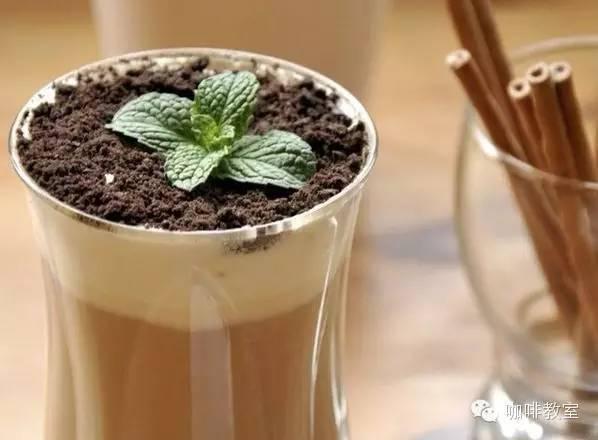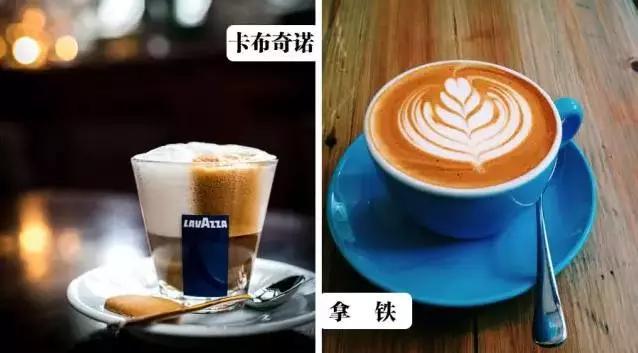New experiment on Fashion Tea: can Chinese Tea get out of the Shadow of Starbucks Coffee?
Although "tea" has a profound cultural heritage, it has been "suppressed" by coffee with more popular temperament for a long time in the competition in the beverage market. This embarrassing situation has annoyed many tea lovers.
Some tea operators have tried to change this situation with feelings, but few have successfully broken the game. When will the big tea culture countries produce Starbucks-like tea brands?
The new tea shop "Kafe Tea", which has been focused on the new concept tea industry for three years, may be used as a sample to observe the industry.
First, products are developed on their own, and environmental design is stolen from cafes.
In 2012, the new concept teahouse "Dafe Tea" opened its first store in Zhengzhou, and in the following three years, it reached the scale of 10 stores in Zhengzhou.
In the summer of 2015, Daffa Tea emigrated from Zhengzhou to Beijing. With its stylish cafe appearance, per capita unit price of 25-30 yuan, physical area of 110-130 square meters, and pure tea-based product line, it wants to redefine the image of "teahouse" in people's minds.
Is it because of category restrictions that "teahouses" are difficult to compete with cafes? Zheng Huixuan, founder of Daffa Tea, said: "the type of tea is not the fundamental issue affecting the development of the industry. What needs to be revamped is the way it is run." They are exploring the business model from four aspects.
1) Research and development of "transitional" tea to train young consumers
Coffee tea products are divided into traditional drinks and transitional drinks. Its transitional drinks, such as black tea cabbage, are filled with coffee cups, milk bubbles are added on the basis of traditional tea juice, and the surface is made with flowers to help young consumers get used to the taste of tea.
2) raise the technical threshold of products and reduce replicability
Teafe tea cooperates with universities and research institutes to develop tea drinks. It uses specially customized equipment to extract the essence of tea to form the taste of milk tea. In the case of black tea Cabo alone, it has invested 300000 in R & D for nearly two months, and the current sales account for 20% of the turnover.
3) do not need tea artists, encourage DIY
Traditional tea drinks are usually brewed by tea artists, and the process is quiet and slow. Tea is omitted from the process of brewing tea by tea artists, and consumers are guided to brew their own tea sets to enjoy the fun of hands-on and better control the overall rhythm.
4) bid farewell to the "aging" atmosphere and move closer to the modern cafe.
The interior decoration of the tea shop is more like a cafe, with a stylish and fast-paced atmosphere.
Its detailed design takes care of the guests' office and social needs. While incorporating traditional elements such as lanterns to highlight the characteristics of Chinese tea, the store is also equipped with computer power sockets, long tables for many people to sit around and private booths.
Second, affix the label of "fast consumer goods" to tea drinks to enhance the radiation of tea culture.
It took two years for Dafe Tea to "make" the first store, and the main attention was spent on precipitating core technology products. At present, the monthly turnover of its Zhengzhou store is basically stable between 15-200000.
In the future, we plan to use physical stores as experience stores for offline distribution, and at the same time develop tea takeout business, which can not only increase the sense of experience, but also expand the sales space. Most importantly, it wants to add experience channels to guide people to form tea-drinking habits and cultivate tea lovers in the new era.
"the meaning of drunkenness does not lie in wine". Tea is finally aimed at the e-commerce platform of tea retail, with the intention of turning tea into a fast-consuming product in a strict sense.
Compared with other coffee brands, the per capita price of tea is about 8-10 yuan lower. By reducing the single consumption price and setting a lower unit price relative to coffee, in order to realize the "popularization" of tea product consumption and make it have the basic attribute of fast-consuming products.
In addition, tea focuses on the creative design of teacups and tea gifts. Zheng Huixuan said that he will lead the contracted designers to Japan to learn from and develop their own products suitable for their own stores.
Third, the six old "postures" will not be reshaped, and the tea industry will only stand still.
Teahouses and cafes are usually regarded as one representing "tradition" and the other implying "modern". In order to break this stereotyped dual cognition, teahouses must change their old posture and reorganize their position in the beverage market. And which are the bottlenecks that need to be broken through in the development of its industry?
1) the "luxury" route solidifies the impression of "minority".
When it comes to traditional teahouses, the public's first impression is that it is meaningful but expensive, not a place for ordinary people to spend. For a long time, traditional teahouses did target "rich" and "status" groups.
2) the product has no innovation and creativity.
Limited to traditional tea varieties, most teahouses do not pay attention to innovation, and even many teahouses use "chess and cards" as the selling point to attract consumers. Putting the cart before the horse, tea is just an accessory to entertainment.
3) the characteristic of "slow living" leads to poor "popularity".
Everything in traditional teahouses is "too slow" for young people. They have curiosity, but do not have the patience, let them open the "pension mode" can only ask for fish, the traditional sense of teahouse culture is very difficult to be popular among young people.
4) the sense of "old-fashioned" is strong and the sense of fashion is weak, and can not catch the young customers.
The space of most teahouses is too hidden and dull, and cafes are more in line with people's needs for fast-paced and fashionable. Zheng Huixuan, founder of Daffa Tea, believes that in order to transform traditional teahouses, it is necessary to meet the leisure and social needs of young people and provide them with tea products that suit their needs.
5) Cultural impetuosity leads to the emphasis on "tea table" but not "tea".
Today's tea culture seems to be affected by the social impetuous atmosphere began to flow on the surface, more pursuit of external forms, only rely on the tea-making ceremony, music collocation, hidden screen to show the tea culture, failed to dig out the deep cultural implication.
6) the "tea people" are lack of modern and professional management ability.
There are many reasons why teahouses are difficult to become a "climate": "people who understand tea do not understand business" and do not manage teahouses as "enterprises"; products lack standardized processes and processes; existing teahouse capital stock and flow are difficult to support expansion and development; lack of business characteristics, inaccurate positioning, and so on.
It seems reasonable that teahouses, which lack modern and professional management ability, are squeezed by the market space.
Source | Carmen (KamenClub)
Important Notice :
前街咖啡 FrontStreet Coffee has moved to new addredd:
FrontStreet Coffee Address: 315,Donghua East Road,GuangZhou
Tel:020 38364473
- Prev

Of the 10 strangest kinds of coffee in the world, China ranks first, and the last one is too strong!
01. China, potted coffee (Potted Plant Coffee) at first glance, this is a pot full of vitality of the exquisite small pot, can be close to smell, aroma overflowing, full-bodied milk from the nostrils! It turns out that this is a cup of potted plants that you can drink! Spread a layer of chopped Oreo cookies on top of the coffee and milk, and finally pretend to be a green plant with mint leaves. 02. Hong Kong, mandarin duck coffee (China Duck
- Next

Would you like a cabbage or a latte? This is a question worth thinking about. Rookies need to know three differences.
Order a cup of coffee and quietly enjoy the tranquility of the afternoon. But there is one question, latte or cappuccino? These two kinds of coffee, which we are all too familiar with, are still foolishly confused. Don't worry, the duty-bound task of distinguishing them falls on Xiao Zhen. Today, to sum up three points, you listen to me. ● cappuccino ● Cappuccino romantic
Related
- What effect does Italian American coffee with filter paper have? Will coffee taste better if it is put on filter paper at the bottom of the powder bowl?
- What is the color difference in coffee beans? What are the characteristics of honey processed coffee beans? Why are the anaerobically treated coffee beans uneven in color?
- How does novice Xiaobai quickly get started and make coffee? Newbies learn to make coffee by hand and share the specific steps and process process!
- Costa tea has a shelf life of 100 years?! Expert: Unable to verify
- It's a huge uproar! American milk addition was rejected by Manner employees?!
- Mocha pot coffee bean recommendations| How fine and how much powder should be used for grinding? What parameter ratios do I need to use to make milk with Mocha pot coffee?
- What are the characteristics of the world's top ten coffee beans treated with Costa Rica honey? How to make black honey kadura from Tarazhu Pilon Processing Plant taste good?
- How to make deep-roasted coffee? What grinding water temperature does authentic Jamaica Blue Mountain No. 1 coffee use to brew it well?
- Selected high-grade rose summer coffee flavor tasting guide Why Panama rose summer has the aroma of flowers and fruits
- What equipment does a novice Xiaobai need to buy to learn to make coffee? Filter cup electronic scale bean grinder manual flushing pot purchase guide

